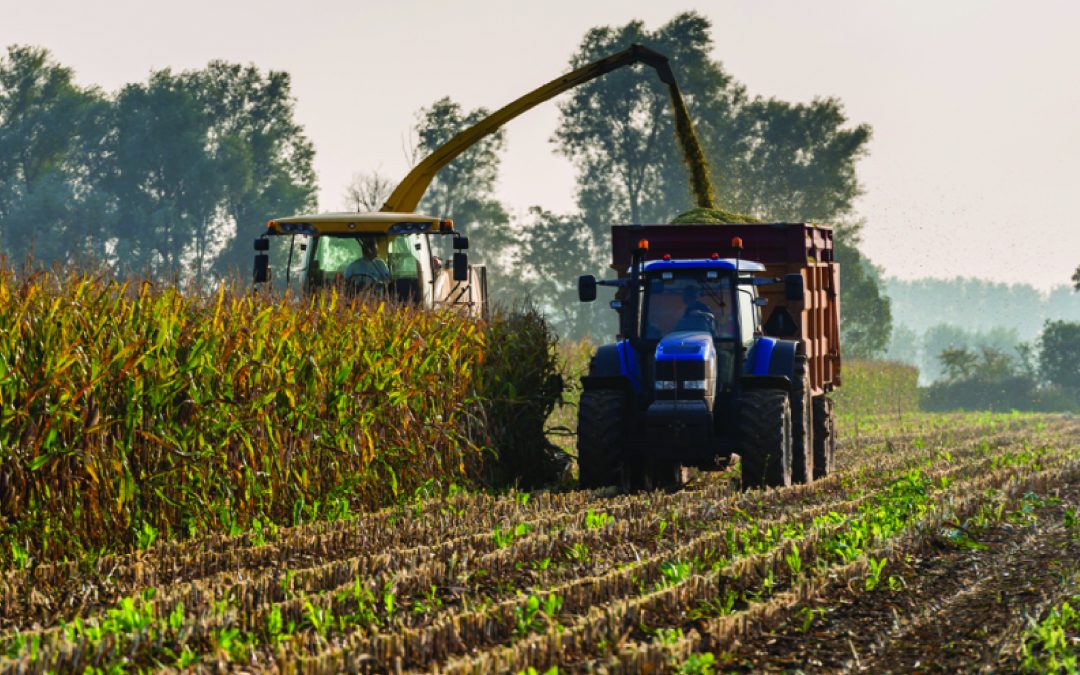By Sarah Robson Ph.D. & Kathleen Shore M.Sc.
Ruminant Nutritionists
Grand Valley Fortifiers
Certain types of molds can produce what are referred to as mycotoxins. Although mold naturally occurs when feed grows, adverse weather conditions can increase the amount of mold that grows and produces mycotoxins. These mycotoxins can be harmful to both monogastric and ruminant animals when consumed and can impact a variety of aspects of animal health and production. It is common for more than one type of mycotoxin to be present, which means there can be additional effects from all types present. Understanding the level of mycotoxins in your feeds will allow you to make nutrition and management decisions to try and avoid the detrimental impacts of mycotoxins on your dairy cows.
*This is data based on 90 Samples taken by Grand Valley Fortifiers across 79 Farms as ofvNovember 15, 2023. The information from mycotoxin reports are on an 88% DM basis,vhowever the cautionary levels are on an as fed basis.
2023 Summary of Mycotoxins Test for Corn Silage in Ontario
As indicated, DON is present in almost all the majority of corn silage samples this year, suggesting an elevated risk of mycotoxin issues in herds when feeding 2023 corn crops. However, as often is the case, this mycotoxin level seems to be county/location specific as seen in Figure 1, with certain locations being more at risk of issues than others. Additionally, these results suggest that the DON values in distillers is likely to be 10-12 ppm.
Impact of Mycotoxins in Cattle
When present in large amounts, mycotoxins can cause acute health and milk production issues. However, chronic consumption of lower levels of mycotoxins can also eventually lead to health and production problems. The impact of mycotoxins on cattle is typically a result of inflammation in the body. Cows are exposed to multiple stressors and sources of potential inflammation throughout their lactation. Routine management procedures such as dry-off, calving, diet changes, pen moves, and vaccination can all be stressors that may increase inflammation. When a stressor is present, bacteria and mycotoxins can get across the protective barrier of the gut and enter the blood stream, triggering inflammation. When inflammation is present, the immune system becomes an expensive site of glucose consumption. The immune system uses glucose to be able to fight off the source of inflammation and will do this at the expense of milk yield. With more glucose being used by the immune system, less is available for milk production and ultimately, the outcome is reduced milk yield. With inflammation present, feed intake, milk production, and reproductive performance are all negatively impacted. In the below table, you will find the symptoms commonly associated with certain mycotoxins.
Representative Symptoms of Mycotoxin Challenges in Dairy Cattle
What to do when mycotoxins are present:
Monitor mycotoxin levels over time
-
-
- Levels can change depending on location and timing of harvest
- Depending on storage environment, mycotoxin levels can increase
- Ensure good representative samples taken for testing of mycotoxins
-
Focus on clean and consistent feed delivery
-
-
- Minimize other factors such as old, dirty feed being given to cows
- Keep feed pushed up; avoid empty bunk syndrome, inflammation
-
Dilution can be helpful
-
-
- Dilute the contaminated feed stuff with clean feeds to keep the overall ration lower in mycotoxins
- In some cases, fully remove the contaminated feed
- Throw away any visibly moldy feed as this is not suitable for milk cows, heifers, or dry cows
-
Consider a mycotoxin binder or adsorbent
-
-
- Both clays and yeast cell wall products rely on binding to the mycotoxin structure and bind best with mycotoxins that have a polar structure, like aflatoxins.
- These products do not bind as well to DON and zearalenone. Clay binders will bind about 25% of DON in feed samples, while yeast cell wall products work better, but still bind less than 50% of toxins present
- These binder products also can bind vitamins and medications in feed so caution should be used
-

Use a probiotic to support gut health
-
-
- Some probiotics have been shown to transform families of mycotoxins to less harmful compounds or eliminate them completely by bio-transformation
- Some probiotics provide beneficial bacteria, reduce gut inflammation
- This offers protection to the gut by restoring tight junctions between gut cells and improving the gut’s ability to fight off inflammation
- On farm commercial trials (3,600 cows) evaluating data from DairyComp found using Assure® led to:
-
- Improve milk production in Lactation 2+ cows by 1.1 kg/d (P=0.0001)
- Improve pregnancy rate at 1st service by 29.3% (P=0.03) For further information, reach out to your GVF Dairy Specialist.
-
-
Final Thoughts
-
-
- This year’s results are showing that mycotoxin levels may be high in corn feeds, so testing for mycotoxins is recommended to understand what levels your feeds are at
- Implement feed management changes to minimize the levels of mycotoxins being fed in the ration
- Reduce other stressors through good feed management and animal care
- Consider adding in a mycotoxin binder or adsorbent depending on the types of mycotoxins you are dealing with
- Adding in a probiotic technology to support gut health can be an effective way to deal with mycotoxins in cattle. Grand Valley Fortifiers has access to an excellent probiotic technology so be sure to speak to your GVF Dairy Specialist for an assured solution.
-
This article was written for the Winter 2023 Central & Atlantic Dairy Grist. To read the whole Dairy Grist, click the button below.

